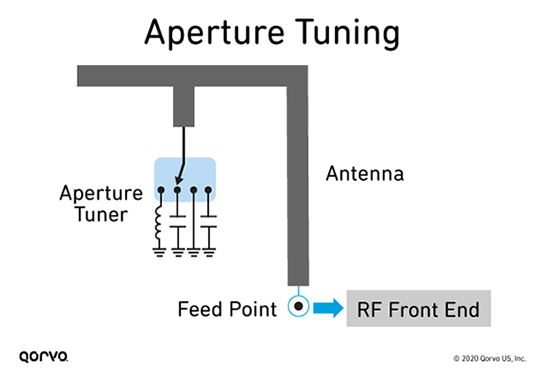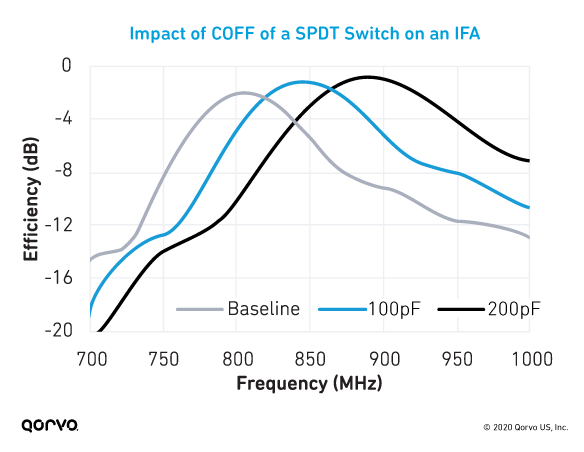|
2195 views|0 replies
alan000345
Currently offline
|
The OP
Published on 2020-10-23 22:04
Only look at the author
This post is from RF/Wirelessly
| |
|
|
||
- 【Posts】Mobile 5G device antenna tuning knowledge
- 【Posts】Mobile 5G device antenna tuning revealed
- 【Posts】4 Things You Need to Know About 4G/5G Smartphone Antenna Tuning
- 【Posts】Reconstructing the antenna design solution for mobile devices in the 5G era
- 【Posts】Reply and give points: 5G is coming, will you change to a 5G mobile phone?
- 【Posts】Zhang Chaoyang questioned 5G: Such high-frequency electromagnetic waves are very harmful to the human body
- 【Posts】Have you used 5G? 6G is coming
- 【Posts】Ride: Which country will be the ultimate winner in 5G? Reply to this post and give points
- 【Download】5G core network basics
- 【Download】Basic knowledge of 5G new air interface
- 【Download】5G related knowledge and applications
- 【Download】Introduction to 5G RF Knowledge
- 【Download】Interpretation of 5G New Radio -- Latest Developments in 3GPP and ITU Standards
- 【Download】ARM White Paper: The Road to 5G: Key Features and Technologies Required for Next-Generation Cellular Communications
- 【Download】NI 5G Semiconductor Test Engineer\'s Guide
- 【Download】The Way of Communication - From Calculus to 5G
- 【Design】Open source DIY: WiFi, 4G, 5G remote control drones/unmanned ships, image transmission/data transmission/remote control integration!
- 【Circuits】How to protect 5G macro base station amplifiers and antennas from electrical hazards
- 【Circuits】The German government confirms that Huawei will not be excluded from 5G network construction
- 【Circuits】5G RF front-end module, do you understand it?
- 【Circuits】Type ADXL05 monolithic acceleration sensor circuit with signal conditioning ±1g to ±5g
- 【Circuits】Recommendations for 5G small base station power supply design
- 【Circuits】RF FUSION? 5G Chipset
- 【Articles】New Infineon antenna tuner enables excellent signal quality and longer battery life in 5G smartphones
- 【Articles】MediaTek launches T830 5G platform to enable 5G CPE devices such as fixed wireless access and mobile hotspots
- 【Articles】MediaTek launches Dimensity 5G open architecture OEM customizable mobile device
- 【Articles】Huawei, ZTE and Ericsson compete for China Mobile's 5G SA core network new equipment
- 【Articles】Qorvo: Challenges and opportunities for mobile devices in the 5G era
- 【Articles】OPPO actively participates in the customization of 5G R16 standards to build a "moat" of intellectual property rights
-
Mobile 5G device antenna tuning revealed
DesigningmultiplemobileantennasHere’saguidetodevelopingproductswithsuperiorantennaperformanceusingCOFFcapacitordevicestoimprovesystemefficiencyandrange.5Gtechnologyisdrivingasignificantincreaseinthenumberofnewfrequencybandsthatmobileantenn ...
-
Mobile 5G device antenna tuning revealed
要设计多个移动天线?面临效率下降问题?这里有一份指南,可帮助您使用COFF电容设备开发天线性能出色的产品,从而提高系统效率,扩大覆盖范围。5G技术促使移动天线必须支持的新频段数量显著增长。由于新型手机设计的复杂性,手机设计师需要在单个天线上使用越 ...
-
What are the employment directions for Python language?
TheemploymentdirectionofPythonlanguageisverywide,coveringmultiplefieldsandpositions,mainlyincluding:WebDevelopment Pythoniswidelyusedinthefieldofwebdevelopment,especiallythroughframeworkssuchasDjango,Flask,etcCrawlerEngineer Pythonhassevera ...
- HAIS 100-P Current Transformer
- Help, how can a novice modify the copper foil when designing a double-layer PCB?
- The microcontroller cannot be programmed. I checked and it said it was locked, but when I unlocked it, it popped up a pop-up saying there was something wrong with the unlock file. I checked the flash and it was like this...
- Technical article | How to use J-Link to burn SPI Flash
- Low power consumption comparison between STM8L and MSP430
- Drag-and-drop stepper motor programmable controller + PLC-like
- Pengfeng Technology RVBoards-Nezha (RISC-V SBC) Allwinner Development Board Introduction 4
EEWorld Datasheet Technical Support
-
Europe's three largest chip giants re-examine their supply chains
At the Electronica 2024 CEO Roundtable held just last week, the CEOs of three chip giants, Infine
-
It is reported that Kioxia will be approved for listing as early as tomorrow, and its market value is expected to reach 750 billion yen
On November 21, Reuters reported that with the support of Bain Capital, Kioxia will obtain approv
-
The US government finalizes a $1.5 billion CHIPS Act subsidy to GlobalFoundries to support the latter's expansion of production capacity in the US
On November 21, the U.S. Department of Commerce officially announced yesterday that it will provi
- SK Hynix announces mass production of the world's highest 321-layer 1Tb TLC 4D NAND flash memory, plans to ship it in the first half of 2025
- UWB is a new way to use it in cars. Can wireless BMS also use it?
- Filling the domestic gap! China Mobile, Huawei and others jointly released the first GSE DPU chip
- Samsung Electronics NRD-K Semiconductor R&D Complex to import ASML High NA EUV lithography equipment
- Apple reveals the secret of its own chip success: competitors can't use the latest cutting-edge technology
- A big chip war is about to start: Qualcomm and MediaTek are involved in notebooks, and AMD is reported to enter the mobile phone market
- Exynos 2600 chip is the key, Samsung is reportedly going to launch a 2nm chip counterattack
- Problems with STM32 and passive buzzer playing sound
- Embedded Tutorial_DSP Technology_DSP Experiment Box Operation Tutorial: 2-28 Building a Lightweight WEB Server Experiment
- OPA847IDBVR op amp domestic replacement
- AG32VF407 Test UART
- [Digi-Key Follow Me Issue 2] Chapter 1: Sharing on receiving the goods
- What model is this infrared receiver? Which model can be used instead? Thank you
- Selling brand new unopened ZYNQ 7Z020 FPGA core board
- The LORA module used in the lithium battery-powered water meter setting can save energy when 100 water meters are installed in one corridor.
- I would like to ask, when a port is set to RX0, is it necessary to set the input and output direction of this port?
- Why is this year so difficult? It’s even more difficult than during the pandemic. I’m 30 and facing unemployment. I’m so confused.
- Ask about the voltage regulator test question
- [Xiaohua HC32F448 Review] About Xiaohua Semiconductor's UART interrupt sending and PRINTF construction and redirection
- 【BIGTREETECH PI development board】 HDMI output test
- 【BIGTREETECH PI development board】+08. Audio test (zmj)
- [Xiaohua HC32F448 Review] +RTC electronic clock






 提升卡
提升卡 变色卡
变色卡 千斤顶
千斤顶